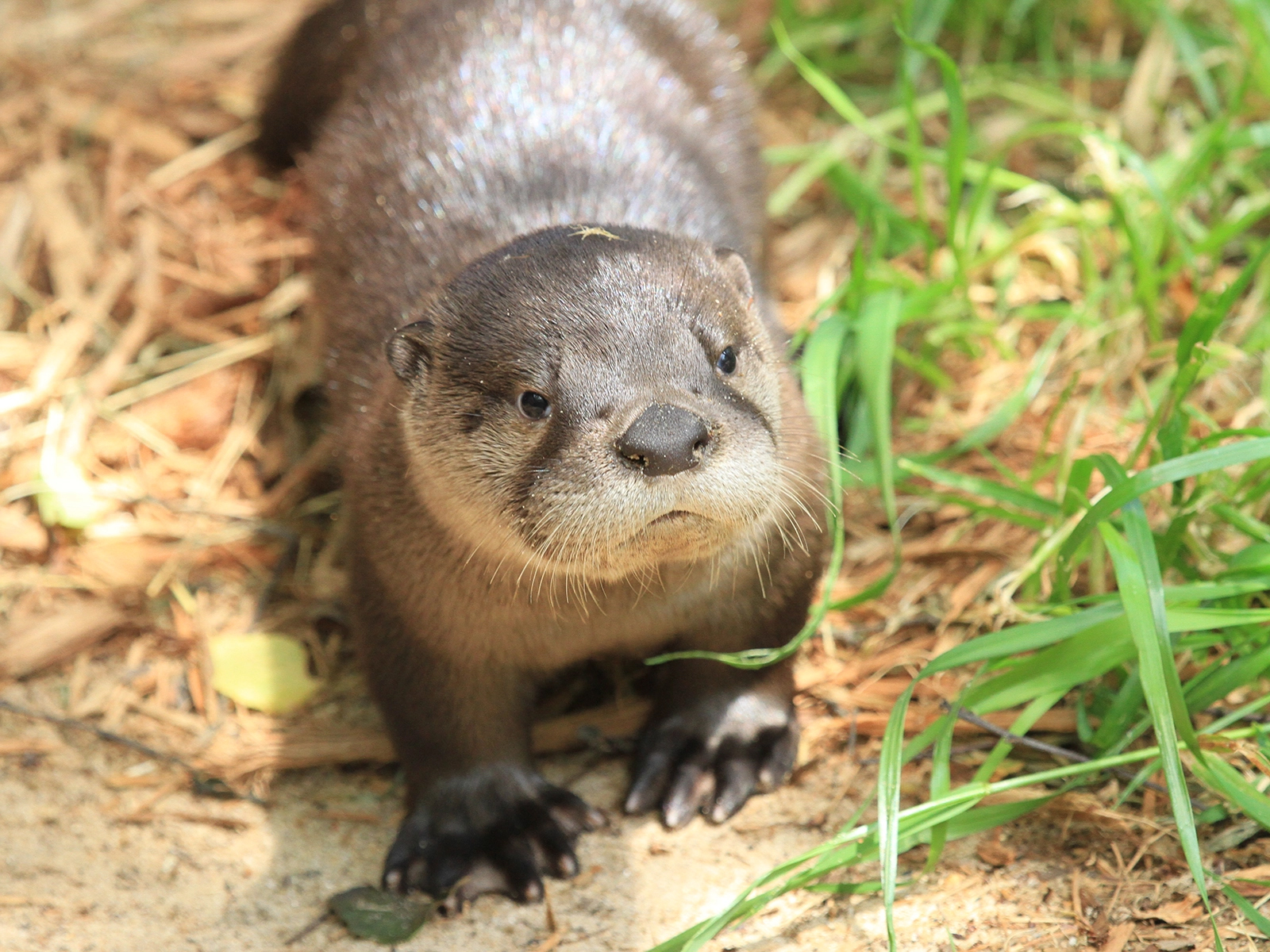North American River Otter
Lontra canadensis
Class
Mammalia
Order
Carnivora
Family
Mustelidae
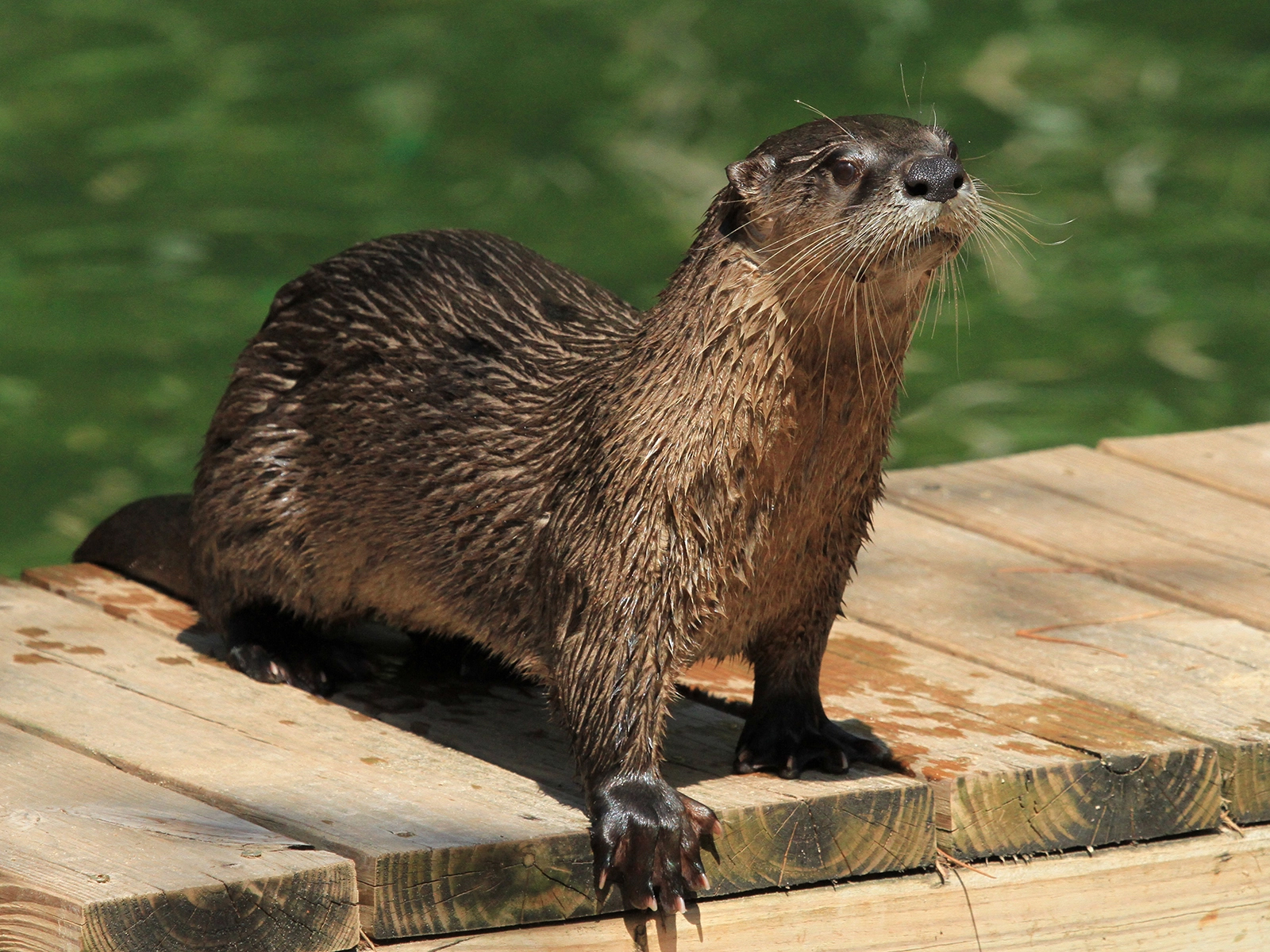
Mammalia
Carnivora
Mustelidae
Alaska, Canada, and the contiguous United States
Length (Head to Tail): 2.5 - 5 ft
Weight: 10 - 30 lbs
Streams, rivers, lakes, and marshes
Avg. 2 - 3 pups
Gestation: 60 - 63 days
Fish, frogs, crawfish, mollusks, other invertebrates, and small mammals
Least Concern
Otters can close off their ears and nose as they dive and swim underwater.
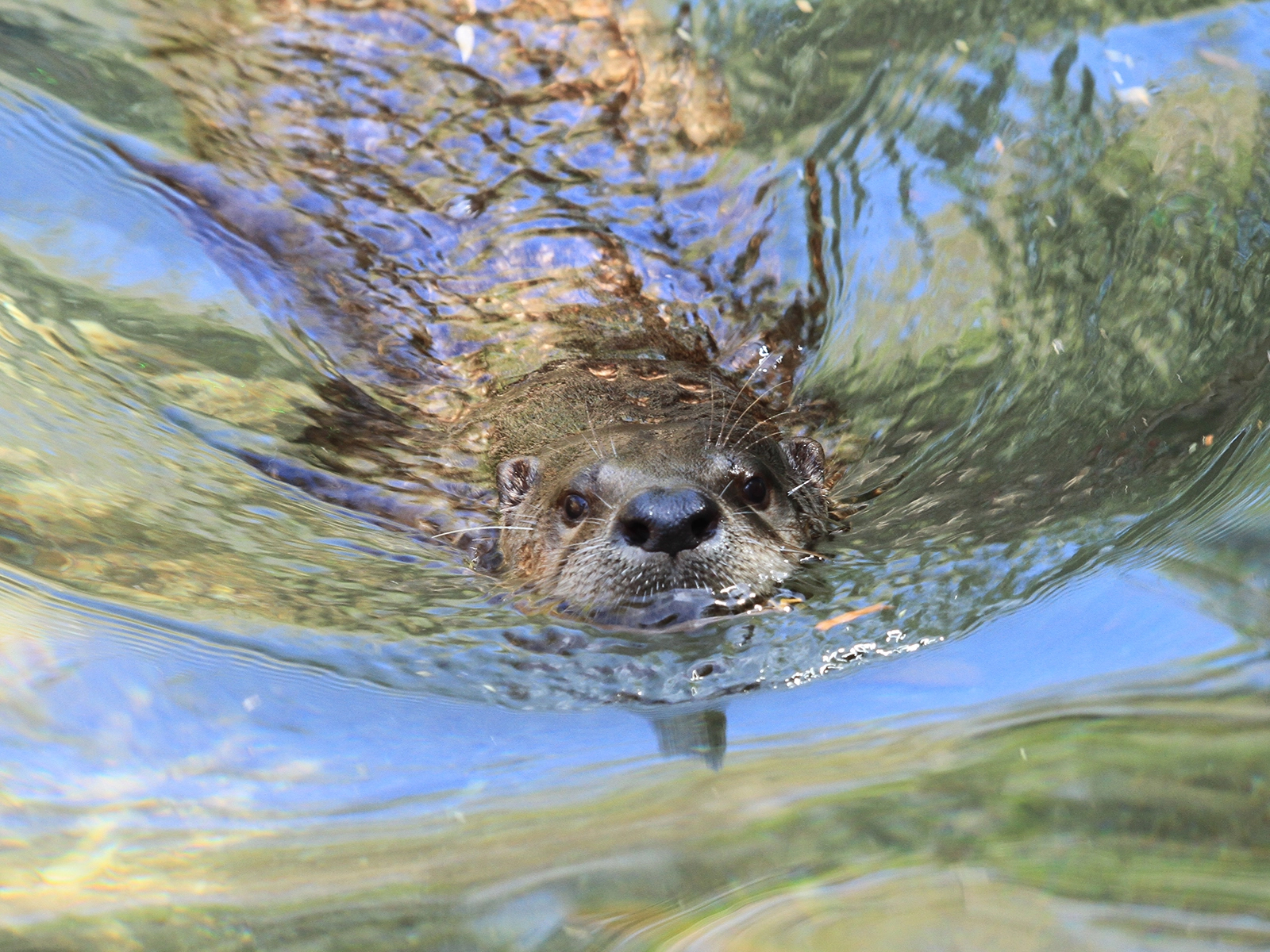
River otters will body-sled down a muddy or snowy slope and plunge into the water with a belly-flop. Their playful behavior strengthens social bonds and practices hunting techniques.

Otters have an accelerated metabolism that gives them seemingly endless energy, but it also means that they must hunt and feed frequently. Their favorite food is fish, but they also eat frogs, crawfish, mollusks, other invertebrates, and small mammals.
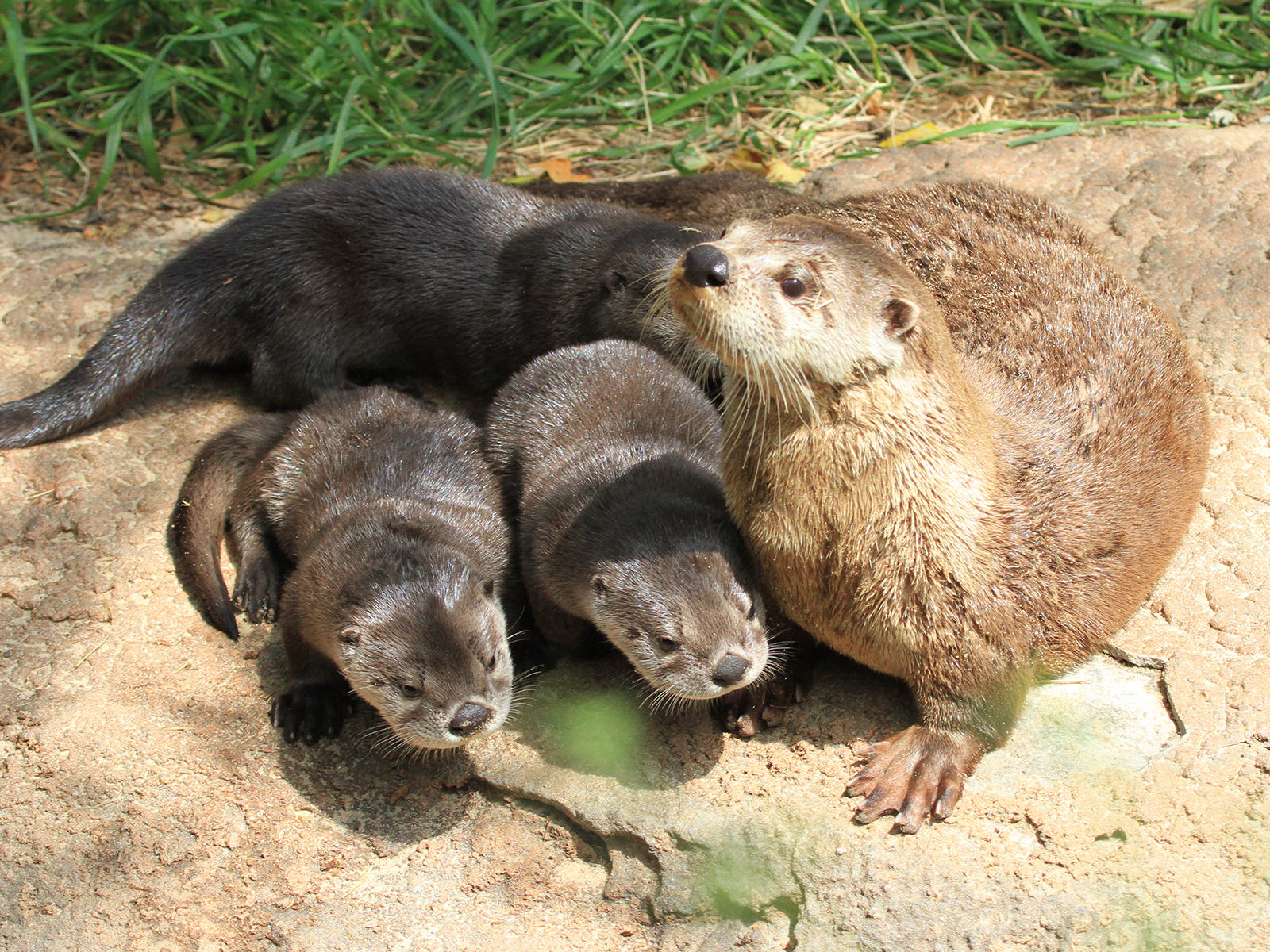
Otters deliver litters of 1 - 6 young. When the female is ready to give birth, she retreats to her underground den, which is usually near water. At birth, otter pups are born with their eyes closed and are completely dependent on their mother.
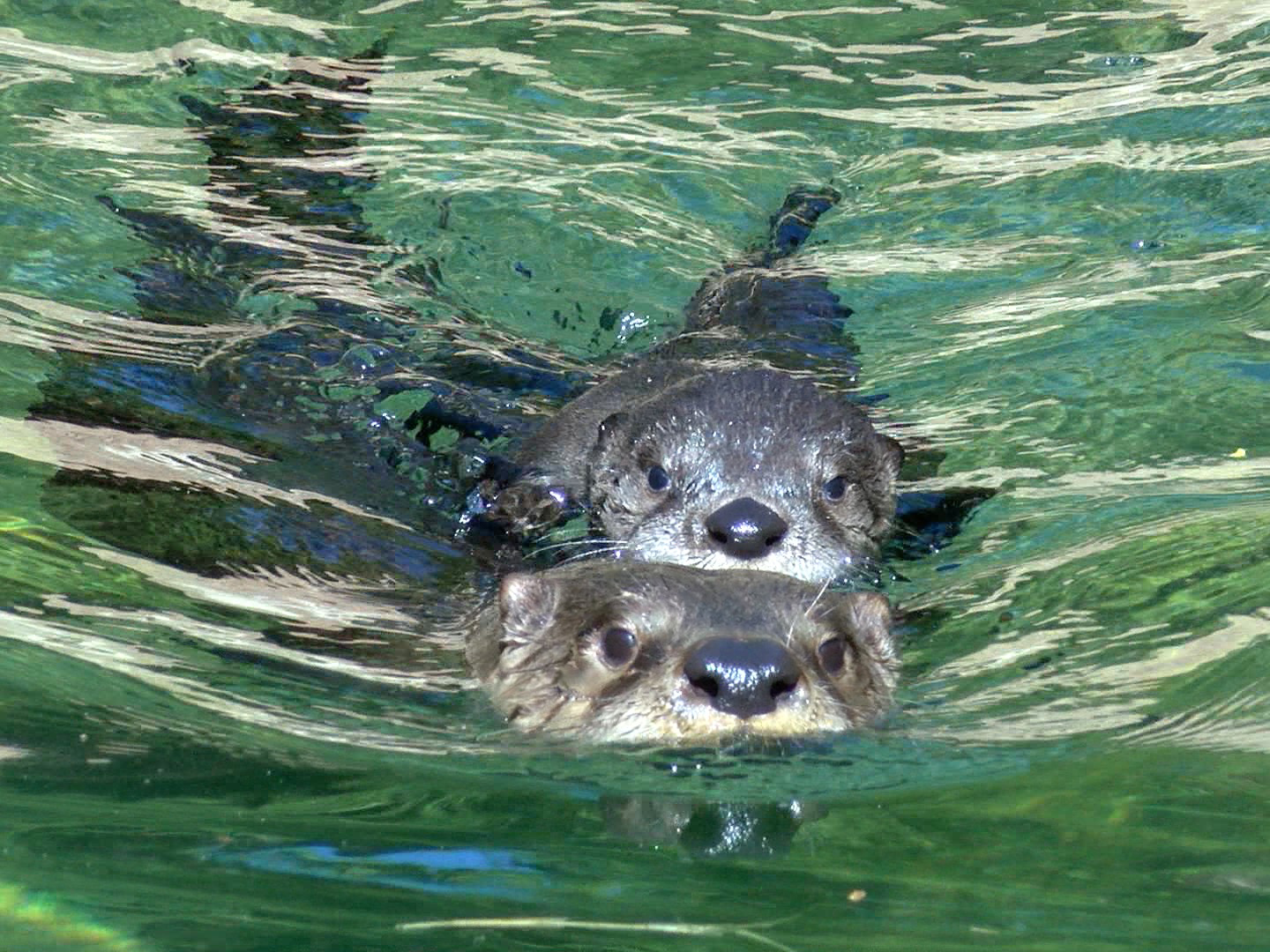
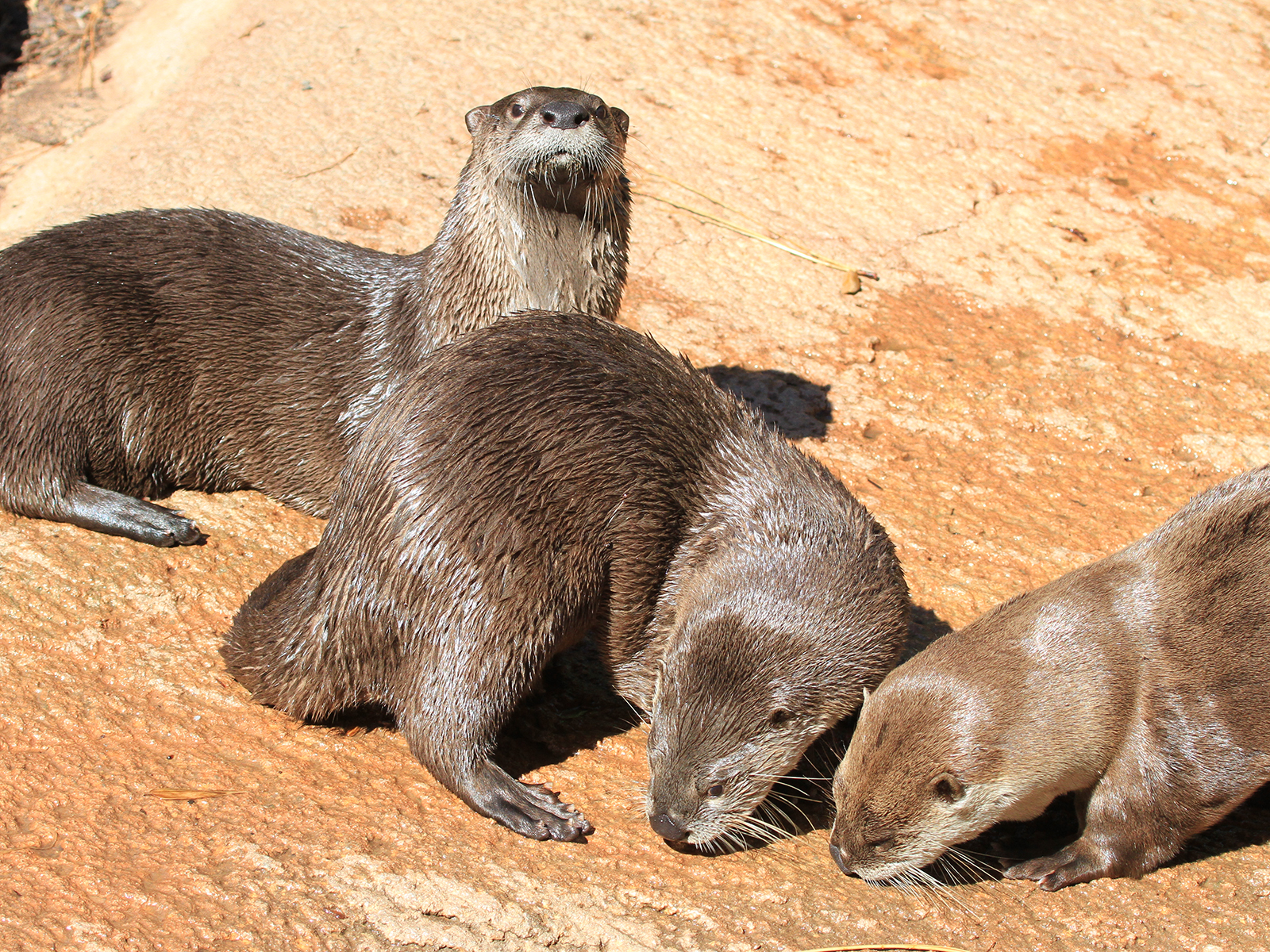
Born March 20, 2012
Born March 5, 2023
Born March 5, 2023
Be mindful of your water usage. Conserve water at home and support local policies that ensure adequate streamflow and protect waterways from development and diversion.
Protect Water Habitats. Properly dispose of waste by never pouring toxic chemicals, old medications, or other hazardous materials down the drain. Use environmentally friendly alternatives to road salt and reduce or eliminate the use of chemical fertilizers, pesticides, and herbicides on your lawn.
Pick up trash. Always properly dispose of your own trash, and consider participating in or organizing a waterway cleanup in your area. Fishing line and other debris can be especially dangerous for otters and other wildlife.
